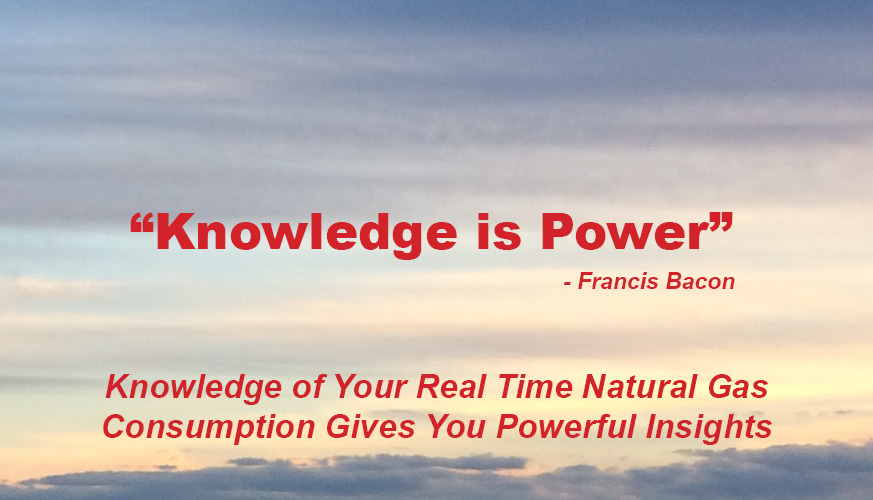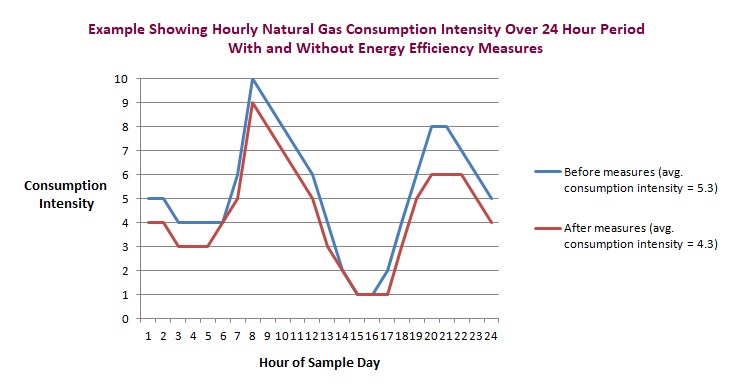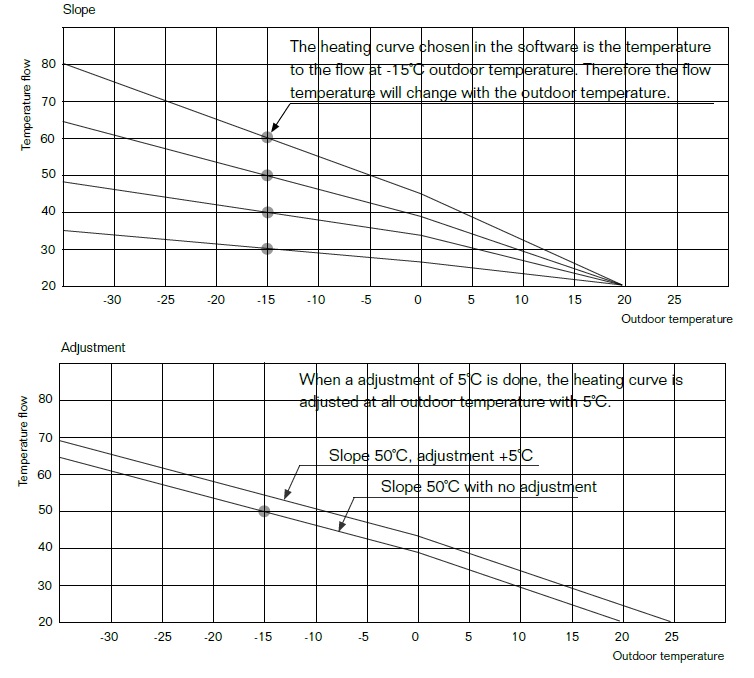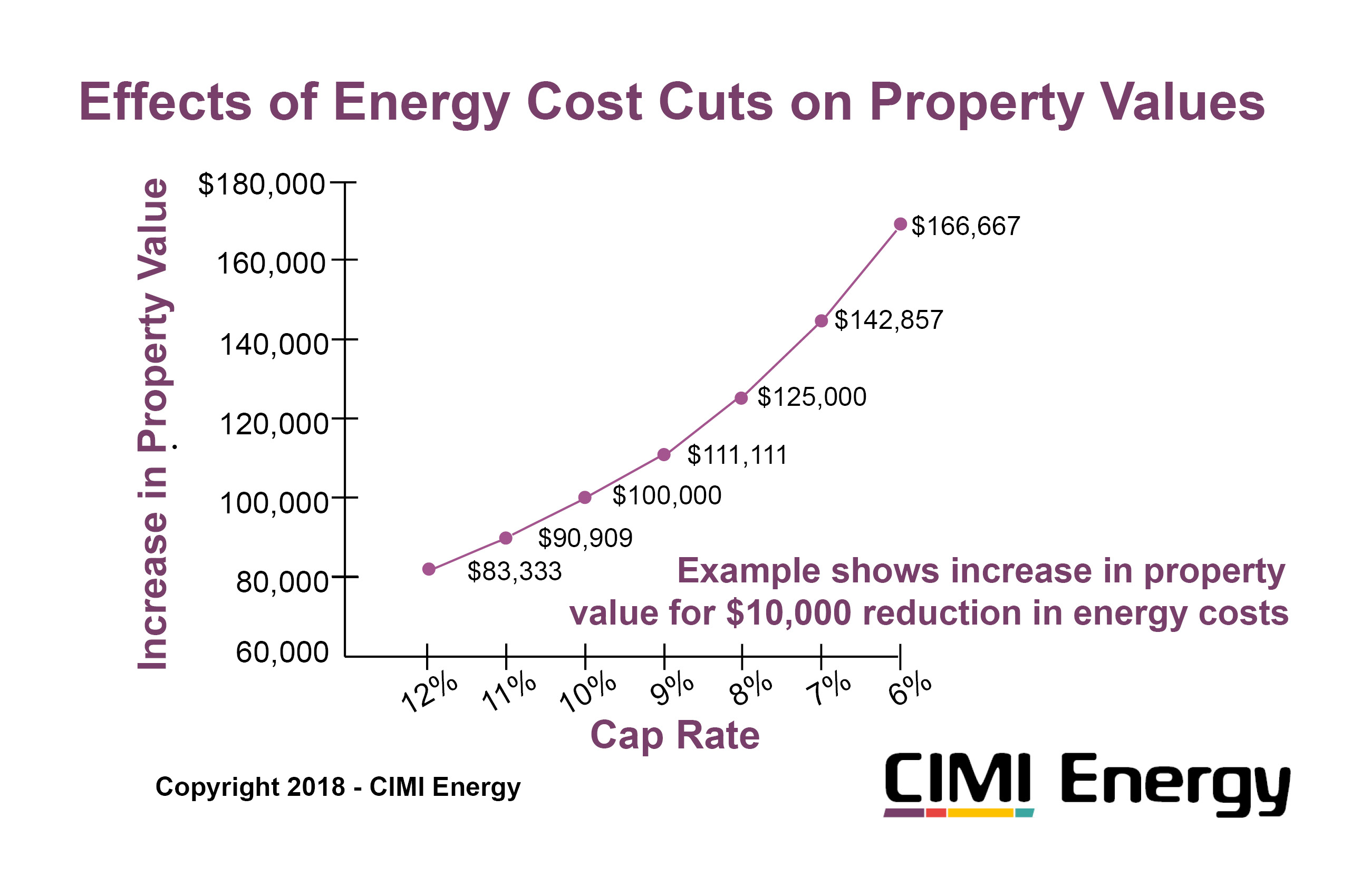 It’s now possible to track natural gas consumption in real time, and here’s why you should. Knowing your consumption in real time makes it possible to associate consumption data with specific internal and external factors. These associations enable insights and actions into making improvements in key performance indicators (KPIs) like energy efficiency, conservation, and sustainability.
It’s now possible to track natural gas consumption in real time, and here’s why you should. Knowing your consumption in real time makes it possible to associate consumption data with specific internal and external factors. These associations enable insights and actions into making improvements in key performance indicators (KPIs) like energy efficiency, conservation, and sustainability.
Looking at energy consumption in real time is not new. Electrical power consumption has long been available in real time. That data is used by customers for behind-the-meter consumption analysis and benchmarking, by electrical utilities to determine demand rates, and for demand response. In the case of real time natural gas consumption data, knowledge of the data by the customer has even broader and more powerful uses.
Using Real Time Natural Gas Consumption Data
Real time consumption tracking is useful for benchmarking and consumption analysis. For example, matching up the rate of natural gas consumption in real time with indoor and outdoor temperatures, time of day, and other factors is useful for making comparisons with similar buildings. Comparing the performance of “Retrofit A” vs. “Retrofit B” with real time data is a powerful way to maximize financial outcomes and system optimizations.
Building dynamics can be determined and used to reduce wasted energy. If the data show that consumption causes indoor temperatures to overshoot their targets (e.g. on sunny mornings), a case can be made for installing a proactive energy control system. A similar analysis can be used for cooling applications that use natural gas fired chillers.
For larger portfolios of buildings, benchmarking the KPIs of similar buildings, then applying an energy conservation technology to one of the buildings will quickly demonstrate how much energy can be saved with that conservation technology. From there, ROI calculations can be made to determine if that conservation measure should be applied to the other buildings.
Faster, More Accurate Insights
Having consumption data available in real time yields faster and more accurate insights. The problem with the commonly used method of analyzing monthly billing data is that there’s a lot of useful information that’s missing because it’s impossible to extract it from the data. Billing data may include degree heating days and/or degree cooling days to match up with the consumption data, but that level of granularity has limited usefulness. First of all, the data that adds up to degree days provides very little potential for drawing actionable insights. The data doesn’t tell you what temperatures were and when (e.g. nights, weekends, etc) and what other factors were present, such as sunlight, wind, and occupancy level. Whatever insights that can be derived from the billing data might take a whole heating season to compile, and even then the conclusions might still be missing the mark.
Real time data can be used to separate out or factor in variables. In some cases it’s even possible to turn on and off energy saving features, adjust heating curves, or the like. Doing so can help to quantify the level of impact from the new feature or setting.
Real Time Energy Use Intensity (EUI)
For the purpose of illustration, here’s a simplified example of an hour by hour comparison of energy use intensity (EUI) on a scale of 1-10 over the course of 24 hours. Lower average EUI with the same external factors yields lower energy costs and lower emissions.

The chart shows average hourly EUI dropping from 5.3 to 4.3 over two “identical” 24 periods. Lowering EUI by approximately 10%, as in this example, is a substantial gain in efficiency. In reality, data can be obtained in even shorter time increments for an even greater level of granularity. As the data would be reported in therms (or similar), it becomes easier to calculate costs and savings.
Natural Gas Consumption, Carbon Emissions and Carbon Tax
In addition to saving money through reduced consumption, building owners, managers, and REIT investors also gain knowledge and insight regarding the quantity of CO2 emissions that are eliminated by lowering gas consumption. Lowering CO2 emissions has value, but the dollar value is difficult to quantify today. However, wherever a price is put on carbon emissions, those calculations become straightforward and readily available.
Next Steps
Contact CIMI Energy to learn more about tracking your natural gas consumption in real time.
CIMI Energy uses Energy Star Portfolio Manager and other tools to turn your real time data into action .
Back to top of post
Outdoor reset technology, which uses a single outdoor temperature sensor to determine boiler temperatures, is being eclipsed by innovative control technologies that utilize multiple factors plus artificial intelligence (AI) to increase efficiency.
As an efficiency solution, outdoor reset is a step above older technologies that didn’t use any external factors for setting the boiler temperature. However, with the most cutting edge technologies of today, there are many additional factors that can be taken into account, and which improve efficiency even more.
Outdoor Reset Technology
Outdoor reset is a technology that correlates boiler settings with the outdoor temperature in one spot outside the building. The purpose of this match-up is to increase efficiency by lowering systemic losses of energy that naturally occur from the production and distribution of thermal energy.
Here’s how outdoor reset works. Heating curves are shown in the image below. One of the curves is chosen manually by an installer or commissioning agent. The colder the outside temperature, the hotter the water that’s produced (or the longer the system runs, in the case of steam systems). The heating curve slope is chosen manually (top image) and the level of the slope is also chosen (2nd image).

Choosing an Outdoor Reset Curve
Often there are more than a dozen curves to choose from. There is inherently some uncertainty in choosing a curve. One could argue that choosing a curve is part art and part science. The main objective is to find a curve that will work for the building, and that leaves some room for error. Finding that a curve is not steep enough, for example, is only going to be discovered when it’s really cold out. This is not a good result. Yet by choosing a curve that’s steeper than necessary, some system efficiency is sacrificed.
Once the system is set up, the chosen curve is usually not changed more than once or twice, if at all, so there’s not much in the way of “fine-tuning”. Curve adjustments are only made after the fact, based on tenant complaints. If the curve is too steep, tenants will not complain, yet efficiency is sacrificed.
[Note that steam systems use outdoor reset, but don’t work exactly like this. Read about steam systems here:
A Modern Innovation for Improving the Efficiency of Steam Heating Systems]
Upgrading from Outdoor Reset to Leanheat AI
Among the factors that can be used to improve system efficiency is a group of building-specific factors such as how a building reacts to sun (e.g. amount of sunshine, time of day and time-of-year), wind (speed and direction), and “thermal inertia”, how a building responds to the heating system. Other important factors that are accounted for are individual unit temperatures, particularly those units farthest from the heat source. What’s needed to account for all these factors is energy intelligence software using algorithms that learn and adapt.
Leanheat AI actually takes into account all these extra factors using local weather forecasts, plus in-unit temperatures and humidity levels that are gathered by strategically placed sensors through cellular IoT technology. Without human intervention, a dynamic heating curve unique to the building is created. Boiler temperatures are controlled better, so there’s none of the typical large buffer that’s always been a necessary part of outdoor reset-controlled systems. As a result, the heating system runs more efficiently. In Finland, where Leanheat was first introduced, efficiency improvements of 10-20% have been realized.
An added benefit has been lower technical maintenance costs, such as from identifying and correcting housing units where climate control is problematic.
Back to top of post
Yesterday’s state-of-the-art steam heating systems will benefit from an upgrade to the innovative heating technology developed by Leanheat. This technology lowers energy use and costs. It does this by getting steam heating systems to run more efficiently.
Unlike hydronic systems which can easily regulate supply temperatures, steam systems always boil water to make steam. Making steam from hot water requires what’s known as a phase change (liquid to gas). Boiling water through this phase change requires a lot of extra energy*, so to wasting the energy, it’s important to limit the amount of steam produced to as close to what’s necessary to maintain comfort as possible. Steam systems are very sensitive to systemic heat loss because there’s a high temperature difference between the steam and the much lower temperatures around the system. Latent heat loss is costly, and drags down system efficiency to a much greater degree than is the case in the aforementioned hydronic systems, for example. For larger steam systems, there’s also an energy consuming vacuum pump that runs to distribute the steam. So the overall energy footprint of these systems is high.
Steam systems as they were initially constructed contained only passive energy saving technology. They relied on pipe insulation and good boiler design. But because getting even a little bit of heat through the building requires expending a lot of energy, any cycling on and off, plus overshoot effects lead to very inefficient operation.
Today’s steam systems typically operate with the first generation of active efficiency improvements. Outdoor temperature, together with a heating curve are used to limit the amount of time the boiler produces steam. For example, milder days require less heat, so by using the outdoor temperature as a factor to limit the time that steam is produced in each cycle, the costly waste of latent heat (see below) that results from overshoot (and thus overheated rooms and opening of windows) is partially avoided. The downside of this control technology, outdoor reset, is that it’s not able to account for outdoor temperature changes ahead of time, so a conservative buffer is required, which has a cost in lower efficiency.
What Leanheat technology does is take this concept of active energy saving quite a bit further, with more and better factors used to determine the amount of steam produced by the boilers. For example, rather than base the heat production of a long-lag heating system on the outdoor temperature right now, Leanheat factors in where the outdoor temperature is going (based on weather data), solar effects (e.g. expected sunshine or cloud cover), windchill effects, and so on. It also factors in how quickly room temperatures change when the boiler is running.
As a result of the Leanheat upgrade, less of a temperature buffer is required, and temperatures are more consistently comfortable throughout the building. The system also runs more efficiently, lowering costs.
More Reading
Read more about this topic in the blog post on outdoor reset here, and in the context of a building’s Unique Energy Fingerprint here.
And how lower energy costs effect property values here.
*It takes about 8,000 BTUs of energy to turn a gallon of boiling water into steam. An 80% efficient steam boiler would require over 10,000 BTU to make steam from a gallon of boiling water. The energy in the steam, know as latent heat, is given off as it condenses in the pipes and radiators.
Back to top of post
Outdoor reset technology, which bases operational temperatures on the outdoor temperature, is going to be eclipsed by innovative control technologies that can utilize more factors. As an efficiency solution, outdoor reset is a step above older technologies that use no external factors for achieving a measure of system efficiency, but there are plenty of external factors that, if taken into account, would improve efficiency even more. Information about energy intelligence software that accounts for these factors follows below, but first a review of outdoor reset.
Outdoor reset is a technology that matches up heating and cooling temperatures with corresponding outdoor temperatures. The purpose of this match-up is to increase efficiency by lowering systemic losses of energy that naturally occur from the production and distribution of thermal energy.
Here’s how outdoor reset works. Heating curves are shown in the image below. One of the curves is chosen manually by an installer or commissioning agent. The colder the outside temperature, the hotter the water that’s produced (or the longer the system runs, in the case of steam systems). The heating curve slope is chosen manually (top image) and the level of the slope is also chosen (2nd image).

Choosing an Outdoor Reset Curve
Often there are more than a dozen curves to choose from. There is inherently some uncertainty in choosing a curve. One could argue that choosing a curve is part art and part science. The main objective is to find a curve that will work for the building, and that leaves some room for error. Finding that a curve is not steep enough, for example, is only going to be discovered when it’s really cold out. This is not a good result. Yet by choosing a steeper than necessary curve, some system efficiency is sacrificed.
Once the system is set up, the chosen curve is usually not changed more than once or twice, if at all, so there’s not much in the way of “fine-tuning”. There’s just too much uncertainty for any one person or team to deal with.
Upgrading from Outdoor Reset to Leanheat AI
Among the factors that can be used to improve system efficiency is a group of building-specific factors such as how a building reacts to sun (e.g. amount of sunshine, time of day and time-of-year), wind (speed and direction), and thermal inertia. Other important factors that are accounted for are individual unit temperatures, particularly those units farthest from the heat source. What’s needed to account for all these factors is energy intelligence software using algorithms that learn and adapt.
Leanheat AI actually takes into account all these extra factors and creates, without human intervention, a heating curve unique to the building. As a result, the heating system runs more efficiently. In Finland, where Leanheat was first introduced, efficiency improvements of 10-20% have been realized.
An added benefit has been lower technical maintenance costs, such as from identifying and correcting housing units where climate control is problematic.
Back to top of post
Cutting energy costs has many benefits, not the least of which is increasing property values. The example below shows the effects on property values for a $10,000 cut in energy costs. If you consider that many properties can have their costs cut by some multiple of that figure, it’s clear that building (or business) valuations can be increased a great deal.

Investment Payback Considerations
For anyone considering the possibility of selling their property or business, the valuation should be factored into the payback equation. That is, even if a sale were contemplated for as little as one year out, an investment in energy cost cutting technology can make good sense even though the investment exceeds the returns on energy savings in that first year. That’s because the investment is not just lowering annual expenses, it’s also increasing the valuation by some multiple of that expense reduction. In other words, the investment results in a positive net present value.
Property Taxes
Another benefit of cutting energy costs is that the benefits over costs go directly to the bottom line. There should be little to no effect on property taxes because the added property valuation from the cost cuts would not be seen until the building or business is sold. In the meantime, energy cost savings accrue for the entire time that the asset upgrade is in place.
Back to top of post
Energy is used in many ways, from heating to cooling to power and motion. Opportunities to lower energy use are available in all of these areas. The challenge is to identify the best areas for reducing energy consumption by balancing opportunities with their costs. It’s possible to find a positive net present value (NPV) for many different upgrades.
Energy Audits
For many building owners and managers, an energy audit is a worthwhile first step. Often there are some glaring opportunities that easily apparent. Old technologies that use lots of energy are an example. Energy audits can provide a list of items where deficiencies exist, which can be prioritized and addressed by order of value.
Technical Fixes
The low-hanging fruit for energy reduction efforts is through the application of technical fixes. In new-builds as well as in retrofit situations, older technologies are being supplanted by new. Many leading industrial companies such as 3M, GM, and Volvo Group have made great efforts to reduce their use of energy in their processes. For example, Volvo Group announced in May 2018 that they have successfully reduced their energy consumption by 25% at their US facilities! As a company in an energy-intensive business, Volvo Group’s savings is impressive, and impactful. Reducing costs, lowering environmental impacts, and increasing competitiveness and investor returns are all resulting benefits.
Technical fixes are also available for other large energy users such as multifamily buildings, hospitals, and hotels. Larger organizations may have in-house expertise, or work with management companies that dedicate staff to energy reduction efforts. Smaller and medium size organizations in these business areas also stand to benefit from significant cost savings, and a corresponding increase in profitability.
Operational Fixes
As noted in the article at the Volvo link (above), that company is going beyond technical fixes: “As we shift from technical changes — which tend to have a large one-time impact — to operational and behavioral changes that are more people-driven” the company’s objectives are to continue to reduce energy consumption.
Companies like Volvo Group are showing great leadership in their commitment to, and success in reducing energy consumption. The behavioral and operational changes are a frontier that is ahead for everyone, though for the time being, for most, it is the technical changes which will bear the quickest payback.
Energy use remains a low-hanging fruit for cutting costs. For many buildings, energy cost cuts of 10-50% are easily achievable. Energy costs are the single largest expense for some buildings, meaning that cutting energy costs can have an outsized impact on a building owner’s cost structure.
By not cutting energy costs where they can, and as soon as they can, building owners incur a reverse compounding (or negative compounding) of that opportunity. The chart below shows the effect of savings lost as if it were an expense. In this example we look at $10,000 in initial energy costs, 5 levels of savings, and the opportunity costs for not taking those savings compounded at 5%.

Multifamily building owners, managers, and tenants all benefit when energy costs are reduced. And cost cuts are both desirable and necessary. Competition in the multifamily sector is increasing. The total number of multifamily housing units increased by 587,000 units last year (2017), the most since 1971. That increased supply ripples across the housing markets, and puts pressure on every owner and manager, whether they be condo owners, multifamily REITs, municipal housing authorities, or direct investors.
The opportunity to cut costs is greatest for those paying the energy bills. Many building owners have already made changes to lighting, and perhaps upgraded to more efficient boilers and chillers. Others have entered into contracts that shave costs from their energy suppliers. There remain many others who don’t have the capital to invest in necessary upgrades. Fortunately, for all of these groups, the biggest opportunities for cost cuts remain. These opportunities are made possible through the application of innovative technologies.
Opportunities for significant cost savings are present whether a building has central heating and cooling, pays variable time-of-day energy rates, includes heating in rent, and more. When the scale of the savings opportunity is large, as it usually is, a solution can usually be found that’s suitable for almost any building.
Back to top of post
It’s now possible to lower energy costs by applying bundled technologies that find and use each building’s “Unique Energy Fingerprint” (UEF).  Our partner Leanheat has created energy intelligence software that bundles artificial intelligence (AI) with the Internet of Things (IoT) to determine each building’s UEF. The technologies integrate seamlessly with existing building assets. Building energy use is reduced through improvements in system efficiency.
Our partner Leanheat has created energy intelligence software that bundles artificial intelligence (AI) with the Internet of Things (IoT) to determine each building’s UEF. The technologies integrate seamlessly with existing building assets. Building energy use is reduced through improvements in system efficiency.
Before this technology became available, this level of efficiency improvement was not achievable in a cost-effective way using current assets. Improvements that have been made have been limited by the available technology. The potential for improved control technology has expanded greatly. Leanheat has been able to focus on realizing that potential for the purpose of lowering building energy use and costs.
There are two major differences between using a building’s UEF and today’s common control optimizer, outdoor reset (OR). First is that the UEF is based on more variables (as opposed to just one or two with OR), giving a more precise picture of the heating and cooling load at any given time. Second, the technology that determines the UEF is able to anticipate loads, and thus to proactively optimize settings so that energy use is reduced.
Proactive beats reactive.
Outdoor reset is reactive. It operates on a curve tied to the outdoor temperature. Outdoor reset depends on finding a heating curve that matches up with the output with the load. Because outdoor reset is reactive, there’s an inherent uncertainty with the load matching. To compensate, outdoor reset curves must provide some extra buffer, and that extra buffer creates inefficiency.
On the other hand, Leanheat proactively anticipates the heating and cooling needs of the building. It does this in two ways. First, it factors in more data related to weather and climate. Factors include:
1. Present and anticipated outdoor temperatures
2. Present and anticipated solar irradiation (sunshine) on the building
3. Sun angle (latitude, time-of-day, and time-of year)
4. Wind direction and speed (“building wind chill”)
Other factors are indirectly (and automatically) factored in based on how the building responds:
1. Capacity of the heating and cooling system assets
2. Building mass & orientation
3. Insulation, windows, etc.
4. Air infiltration
Together, these are the variables that make a building’s UEF. Because it uses more variables, it’s able to get a more complete picture of the building’s energy load.
The second way that the Leanheat technology is proactive is that it monitors how building data correlates with naturally occurring changes in weather. As a result, the technology finds the UEF and its algorithms keep the building systems matched appropriately to current and incoming weather. The result is a typical cost savings of 10-15%.
Proactive heating and cooling control is especially important in buildings that react slowly to changes in weather and climate factors. Of course, any building with traditional controls can react slowly to a cold front with wind and rain or snow. Or when the cloud cover breaks up and suddenly the building is in full sunshine. Proactive technology controls the water temperature (or steam) with greater precision (and “less cushion”) than is possible with a reactive-based system like outdoor reset.
Back to top of post
![]() It’s now possible to track natural gas consumption in real time, and here’s why you should. Knowing your consumption in real time makes it possible to associate consumption data with specific internal and external factors. These associations enable insights and actions into making improvements in key performance indicators (KPIs) like energy efficiency, conservation, and sustainability.
It’s now possible to track natural gas consumption in real time, and here’s why you should. Knowing your consumption in real time makes it possible to associate consumption data with specific internal and external factors. These associations enable insights and actions into making improvements in key performance indicators (KPIs) like energy efficiency, conservation, and sustainability. 





 Our partner Leanheat has created energy intelligence software that bundles artificial intelligence (AI) with the Internet of Things (IoT) to determine each building’s UEF. The technologies integrate seamlessly with existing building assets. Building energy use is reduced through improvements in system efficiency.
Our partner Leanheat has created energy intelligence software that bundles artificial intelligence (AI) with the Internet of Things (IoT) to determine each building’s UEF. The technologies integrate seamlessly with existing building assets. Building energy use is reduced through improvements in system efficiency.